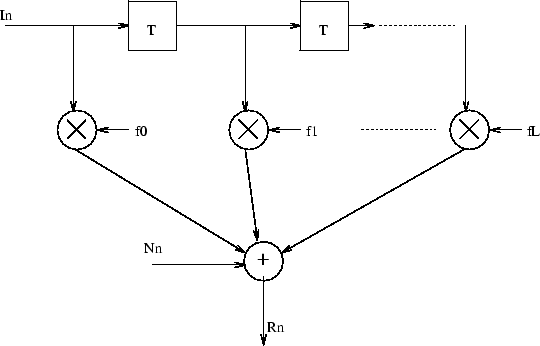


Next: Maximum Likelihood Sequence Estimation
Up: Collected Problems
Previous: Modulation
A mobile communication system employs binary phase shift keying with rectangular
pulses
to transmit information at a rate of one bit per  seconds
over a channel with (time-invariant)
baseband-equivalent impulse
response
seconds
over a channel with (time-invariant)
baseband-equivalent impulse
response
Furthermore, the channel adds white Gaussian noise  of spectral height
of spectral height
 .
The receiver is designed under the assumption that
.
The receiver is designed under the assumption that
 and hence is simply
a filter matched to the transmitted pulses
and hence is simply
a filter matched to the transmitted pulses  .
In summary, the communication system can be described by the following block
diagram.
.
In summary, the communication system can be described by the following block
diagram.
The objective of this problem is to determine the parameters of the equivalent
tapped delay-line model between the input sequence  and the output sequence
and the output sequence
 .
A generic block diagram for a tapped delay-line model is given below.
.
A generic block diagram for a tapped delay-line model is given below.
- Compute the convolution of the pulse shaping filter
 with the
channel impulse response
with the
channel impulse response  .
.
- How many memory elements
 are there in the tapped delay-line?
are there in the tapped delay-line?
- What are values for the coefficients in the tapped delay-line model?
- Find the distribution (type, mean, variance, etc.) of the additive noise
 samples in the tapped delay line model.
samples in the tapped delay line model.



Next: Maximum Likelihood Sequence Estimation
Up: Collected Problems
Previous: Modulation
Dr. Bernd-Peter Paris
2003-12-08
 of spectral height
of spectral height
![]() and the output sequence
and the output sequence
![]() .
A generic block diagram for a tapped delay-line model is given below.
.
A generic block diagram for a tapped delay-line model is given below.
 with the
channel impulse response
with the
channel impulse response  samples in the tapped delay line model.
samples in the tapped delay line model.